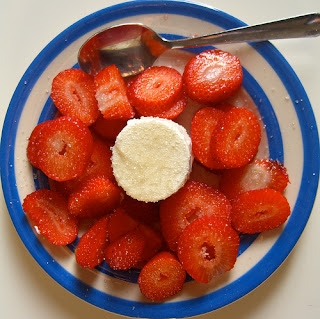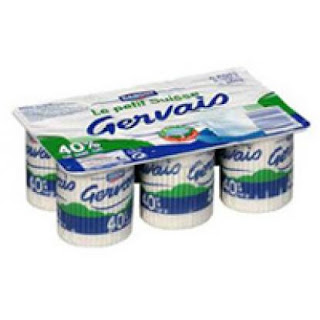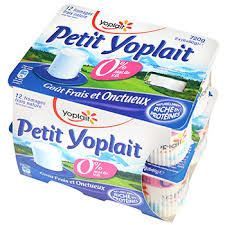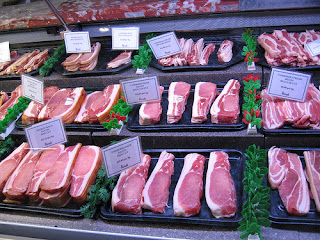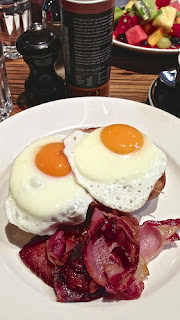from
Behind the French Menu
by
Bryan G. Newman
Many types of bacon.
https://www.flickr.com/photos/misocrazy/68153867/
Bacon in France
The words bacon and lard in French have created more than a few problems when encountered by English speakers in France. First-time visitors to France trying to read French menus may easily become confused with the French usage of bacon and lard.
The confusion began in 1066 when William the Conqueror came over from Normandy in France and conquered England. William then divided the land among the Norman-French Barons who had fought alongside him. The Barons brought to their new estates Norman-French cooks who made enormous changes in the language used in the English kitchen. Among the changes, the French word bacon was introduced and it meant then what it still means today: smoked, salted or dried meat from the back, sides or belly of a pig. The French word lard was also introduced, and then it meant pig fat and it still means pig fat in English.
A few hundred years later, within France, the French changed the meaning of their word lard. They made the word lard mean bacon and now the French have two words for bacon, both bacon, and lard. At that time they changed the word for pig fat in French to saindoux (pronounced sane-doo).
Saindoux
Pork fat, lard in modern French.
That change has, however, caused quite a few first-time English-speaking visitors to France who seeing the word lard on a French menu to grab the wrong end of the stick. Lard on a French menu does not indicate a dish cooked in pig fat, it only means bacon.
N.B. In the Alsace and Lorraine Norther French German based dialects bacon is Speck.
Bacon and Lard on the French Menu:
Fried eggs and with American style bacon (and spinach).
https://www.flickr.com/photos/jsnyng/8993312627/ FF
Oeufs au Plat, Bacon, Pain Grillé, Café et Jus d'Orange – Two fried eggs, grilled bacon, toast, coffee and orange juice. N.B. Both toast and pain grillé in French mean toast in English.
Fried eggs with UK style bacon.
https://www.flickr.com/photos/ultrakml/8563902658/
The French types of bacon most often seen in the supermarkets.
Every country and region has its favorite cuts of meat, and that is true for France and French bacon. The names that will most often be seen on menus or in the supermarkets are noted below.
Bacon de Dos (Longe de Porc) Fumé, Bacon Canadien - Canadian bacon. A lean, brined bacon that comes from a loin cut further back on the pig. Americans gave this type of bacon the name Canadian bacon because they believed, incorrectly, that this was the most popular bacon style in Canada. However, when you ask the Canadians, you find the origins relate to a type of bacon from southern Ontario, known as peameal bacon. This bacon was popularized in the early 20th century in Toronto by an immigrant from England called William Davis. Davies' legacy continues to live today with thousands of people flocking to St Lawrence Market, Toronto, where peameal bacon sandwiches are served on a crispy bun.
Bacon Fumé - Smoked bacon.
Chips de lard - Crispy pieces of bacon.
Filet de Saxe - A salted pork fillet,
the tenderloin, wrapped or not, wrapped it has a taste close to bacon though it is very tender. Similar
cuts are also smoked.
Lard Fumé – Smoked bacon.
Lard de Poitrine Fumé or - Smoked bacon from the chest or belly. In the USA, I was told that this is called slab bacon and in the UK streaky bacon.
Lard de Poitrine Frais – Fresh streaky bacon.
Lard Maigre Frais – Fresh, lean, bacon.
Lard Maigre Fume – Smoked, lean, bacon.
Lard Maigre Salé – Salted, lean, bacon.
Lard Nantais - Not a type of bacon, rather a dish of pork chops and pork rinds cooked in the oven. As its name implies this dish is traditional in and around the City of Nantes. Nantes is in the department of the Loire-Atlantique and is the regional capital of the Pays de la Loire region.
Lard Ventrèche – Streaky bacon. In France, streaky bacon will be used fresh and salted or smoked. Fresh streaky bacon is often used to bard other meats while they are being cooked. Barding a steak requires tying a steak all around with fat to prevent the meat drying out while it is being cooked. Sometimes barding is also done for the added flavor; streaky bacon is also the bacon most often used to make lardons, bacon cubes. (see Lardons).
Lardons - Small cubes of fatty bacon and very much a French kitchen essential. Lardons may be salted or smoked depending on the taste required and will be used to flavor many different dishes. Lardons may be stuffed inside a roast chicken or may be added to a stew for flavor. Lardons may also be fried until they are crispy and then added cold to a salad.
Uncooked Lardons
Salad with lardons
https://www.flickr.com/photos/gnusam/6261251612/
Lardon Fumé - Smoked cubes of bacon.
Lardon Fumé en Tranche Fine – Thin rashers of smoked bacon.
Tranches de Lard or Tranches de Bacon– Bacon rashers/slices. French bacon rashers are closer to the UK cut having more meat than fat and come from the back of the pig.
There are many more styles of bacon available, but those listed above include those I could identify with bacon sold in the USA and or the UK.
Petit Salé – Salted pork
Salted pork entered the French and British kitchens among the foods that could be stored for long sea voyages. The pork would be cured in water and salt for anything from four to six weeks and then air-dried. Both air-dried salt pork and smoked salt pork could be stored for months. Recipes made with salted pork have become part of the traditional dishes of many countries, not only Britain and France. (For more about the French Connection and the English Kitchen click here).
Salted pork
https://www.flickr.com/photos/sshreeves/5723849704/
Petit Salé aux Lentilles – Salted pork with lentils; a traditional bistro dish. Lentils are a dried vegetable and so were the perfect accompaniment to salted pork as both could be stored for long ocean voyages. Salt pork and lentils is a French comfort food.
Petit Salé de Canard aux Lentilles Vertes du Berry – This is not smoked pork, this is smoked duck. Smoked duck’s taste is somewhat similar to smoked ham/pork, and here it is served with the Red Label green lentils from the old province of Berry. Berry is now mostly the departments of Cher and Indre in the region of Centre-Val de Loire.
Petit Salé Fume – Smoked salted pork.
Poitrine Fumé - the same as Lard de Poitrine Fumé.
Poitrine Demi-sel - The meat from the belly of
a pig, cured and lightly salted but not smoked. I believe this would be called
slab bacon or pork belly in the USA. In
the UK, streaky bacon is smoked, which would not taste the same though the cut
is from the same place.
Connected Posts:
Behind the French Menu
by
Bryan G. Newman
Copyright 2010, 2016.





